Reptiles
Reptiles are a perfect match for southern Californias excessively sunny climate. Because they are cold blooded, they depend on the warth of the sun to give them the energy they need to look for food, make a home, and potentially escape from predators. Reptiles are plentiful in the arroyo, especially lizards. Reptiles are tetrapod vertabrates, meaning that they are either four legged or evolved from four legged animals.
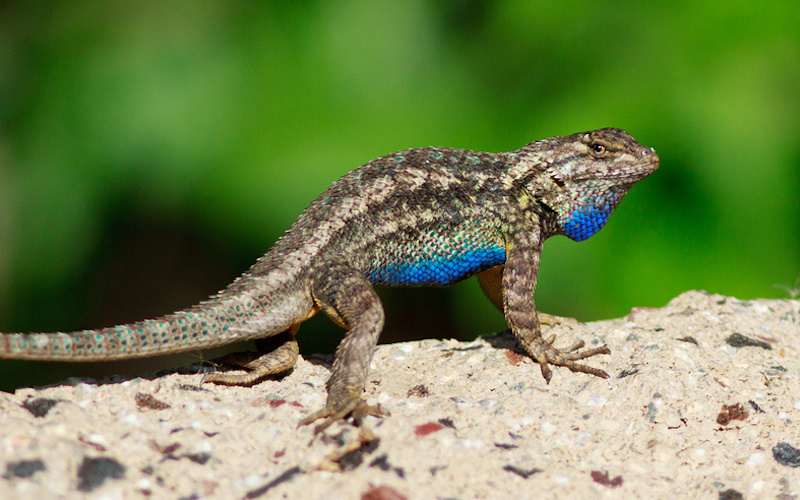
Western Fence Lizard
Sceleporous occidentalis biseriatus
Known for it's signature blue belly, the western fence lizard is the most common reptile throughout the region. It can be found throughout the west in most climates that have some access to water. Interestingly, occurences of lyme disease have been shown to be less frequent in areas with large populations of this lizard. A protein in its blood kills Lyme disease so when it is bitten by an infected tick it essentially purifies it.
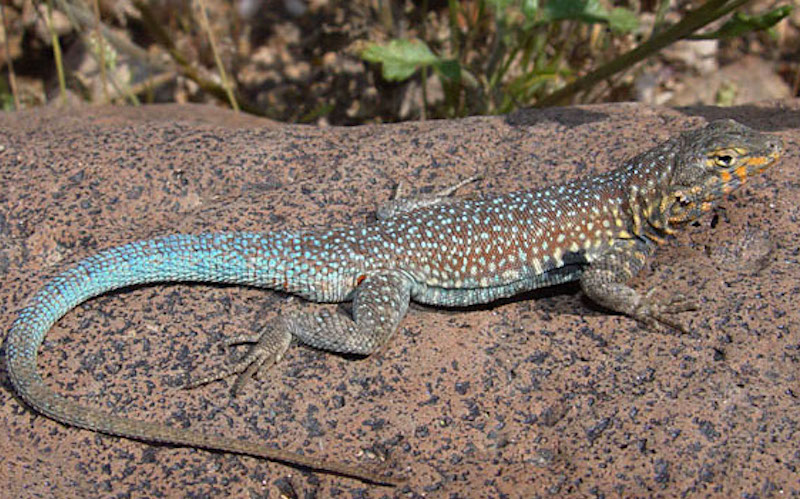
Side Blotched Lizard
Uta stansburiana
One of the most common of the deserts of the southwest, this lizard is a snack for many predators. It compensates for this misfortune by employing an extremely prolific breeding cycle, breeding continuously for three months. Side blotched lizards are notable in nature for being the species with the highest numbers of specific genders: 5 (3 male and 2 female). Each of these genders has a distinct coloration and social role.

San Diego Alligator Lizard
Elgaria multicarinatus webbi
The name of this lizard comes from the fact that its scales are reinforced by bone, much like those of an alligator. They are known for their vicious self defense, and will bite and defecate if handled. Alligator lizards can be found throughout the Pacific Coast of North America and are often found near water in drier climates.

Coastal Western Whiptail
Cnemidophorus tigris multiscutatus
This lizard is less common and is only found in Southern California and Northern Mexico. Its coloration varies somewhat through different counties and it moves very abruptly with jerks. It rarely sits still and is surprisingly strong when handled - if you decide to pick one up be careful of the especially sharp claws.
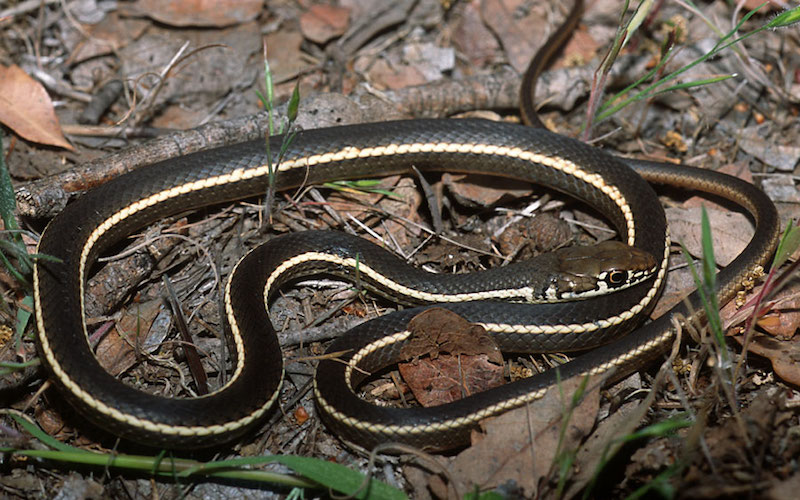
California striped racer
Masticophis lateralis lateralis
Striped Racers (also known as Whipsnakes) are long, slender, fast-moving, diurnal snakes inhabiting chaparral, scrubland, open woodlands, rocky hillsides, mostly in the foothills, but also in higher-elevation mixed woodlands. Most often found moving rapidly across the ground. Can also be found moving with the head and forward part of the body raised off the ground. Sometimes found hiding under surface objects.
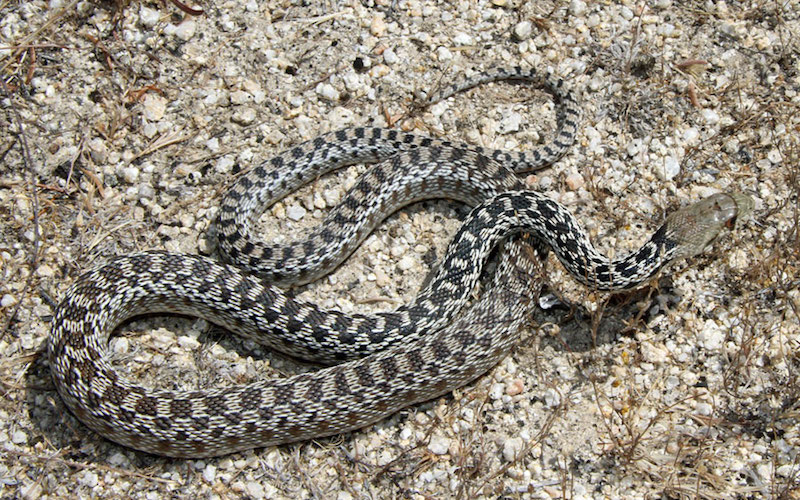
San Diego Gopher Snake
Pitouphis melanoleucus annectens
This is one of the most commonly seen snakes on roads and trails, especially in the spring when males are actively seeking a mate, and in the fall when hatchlings emerge. It is a good burrower, climber, and swimmer so it is at home throughout the Arroyo. This snake is a constrictor, and while non-venomous, its a good idea to be careful not to get bit if you pick one up.
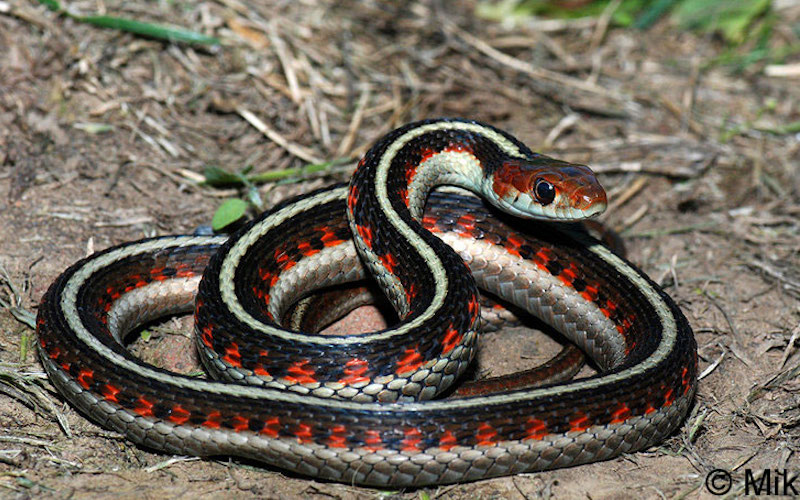
California red-sided gartersnake
Thamnophis sirtalis infernalis
Found only in coastal ranges of California, this subspecies of the common garter snake is very good at escaping into water when threatened. Like other garter snakes it is non-venomous and thus not considered dangerous to humans. However, this snake usually purges its cloacal contents (read: poop) when picked up before biting, so it may not be a very fun choice to grab one. Interesting Fact: this species can withstand the lowest temperatures of any North American Snake.
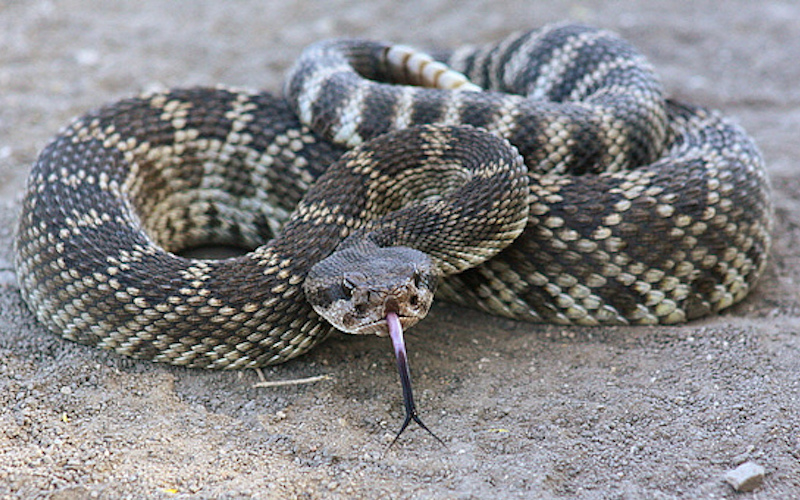
Southern Pacific rattlesnake
Crotalus oreganus helleri
This widely known snake is found only in drier parts of Southern California and Northern Mexico. It has a highly toxic venom and can easily be deadly if it has a chance to bite. The snakes learn to control the quantity of venom used as the mature, so bites from young snakes can be the most deadly. It is primarily crepuscular (active at twilight) but can be active during daylight when the temperature is more moderate. Rattlesnakes sense their prey using pit orgrans, heat sensing cameras that allow them to detect animals.
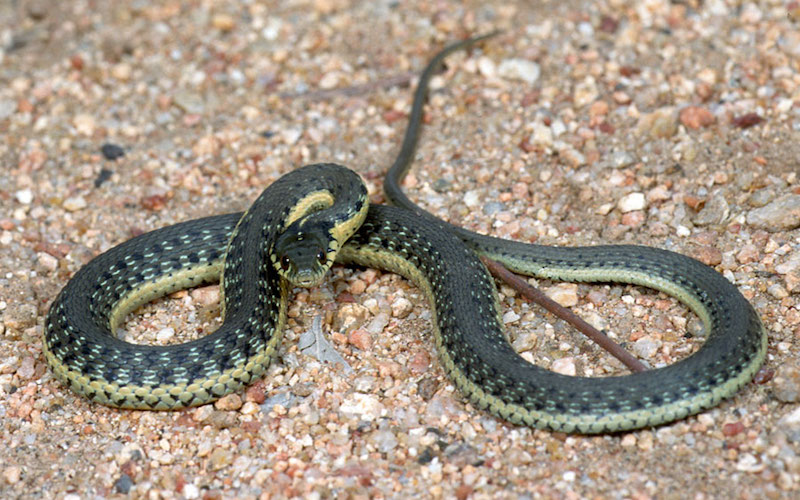
Two-striped gartersnake
Thamnophis hammondii
Found in Southern California and Mexico, this snake is generally found around pools, creeks, cattle tanks, and other water sources, often in rocky areas, in oak woodland, chaparral, brushland, and coniferous forest. It is primarily aquatic and searches for food almost exclusively underwater, eating tadpoles, fish and other aquatic insects. The two-striped gartersnake is a California Species of special concern, meaning that its habitats are protected.